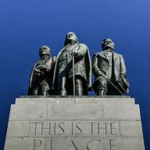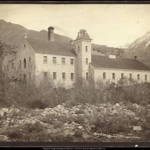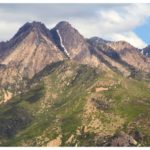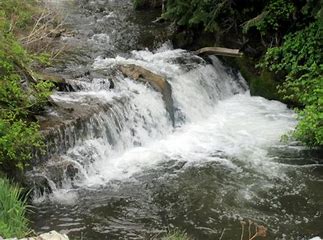When the residents of the four community councils that made up the Millcreek Township: Canyon Rim, Millcreek, East Millcreek and Mount Olympus, voted to incorporate into Utah’s newest city in November 2016, I’m confident the majority of those voters did not realize the peaceful and picturesque community in which they reside almost became Utah’s first city.
Three days before Brigham Young led the Mormon migration into the Great Salt Lake basin on July 24, 1847, Erastus Snow and Orson Pratt entered the valley on an advanced scouting exploration and turned south, following, almost precisely, the route that Interstate 215 now occupies. They set their base camp at the mouth of a canyon from which ran a crystal clear and flowing creek that would later bear the new city’s name.
Those men realized then, and what history has since acknowledged to the more than 60,000 residents that live here now, the beauty, accessibility, and setting of the Millcreek area make this one of the most choice and livable regions in all the Salt Lake Valley.
The abundance of arable land, vegetation, wildlife, vistas and of course, the essential element in a desert, an abundant water source impressed those early Mormon scouts and they encouraged the Mormon president to settle in this part of the valley. Brigham Young,  however, chose to establish the main encampment farther north on the flatter land and more steady flowing stream which is now City Creek.
however, chose to establish the main encampment farther north on the flatter land and more steady flowing stream which is now City Creek.
Whether owing to divine inspiration or the genius of a master colonizer, President Young saw, on that hot steamy July day, the main encampment for those hardy pioneers, which is now our capital city, lay on the north side of the valley, not the south.
Although Millcreek would not become the first permanent settlement in Utah, its history commenced quickly enough. As soon as the winter snows abated in February 1848, industrious individuals like John Neff and the Garderner brothers, Robert and Archibald moved to the area and established mills on the creek that would bequeath our city its destiny. Nineteen mills would eventually line the stream  from, what is now, Highland Drive to the top of the Millcreek Canyon.
from, what is now, Highland Drive to the top of the Millcreek Canyon.
Those mills, driven by the water supplied by a life-giving source, were essential to grind the corn and wheat necessary to sustain a growing and hungry community.
Permanent homes soon followed and the Osguthorpe, Stillman, Fisher, and Keller families planted the orchards, tilled the farms and cultivated the pastures to raise the stock and grow the crops that would feed the thousands of settlers flowing into the Salt Lake Valley.
Without these life-saving goods, nurtured from a creek that gave them life, the success story of the great Western Mormon Migration, could not have happened.
One hundred and sixty-nine years later that first camp, established by those early Mormon explorers at the base of Mount Olympus, has become Utah’s newest city and the Millcreek community has played an essential and important part in the history of this state with many and varied accomplishments.
city and the Millcreek community has played an essential and important part in the history of this state with many and varied accomplishments.
But consider what could have been if Brigham Young had turned South instead of North oh so long ago.
Millcreek, Utah’s newest city, would have been the first municipality and maybe the Capital City of all of Utah. “Gateway to the Mountains” would not just be the slogan of Utah’s newest city, it would be on the license plate of every car in the state.
Jeff Waters is Chairman of the Canyon Rim Citizens Association and is currently in pre-production on a documentary about the history of Millcreek. You may contact Jeff on his website at www.jeffgolfguy.com


